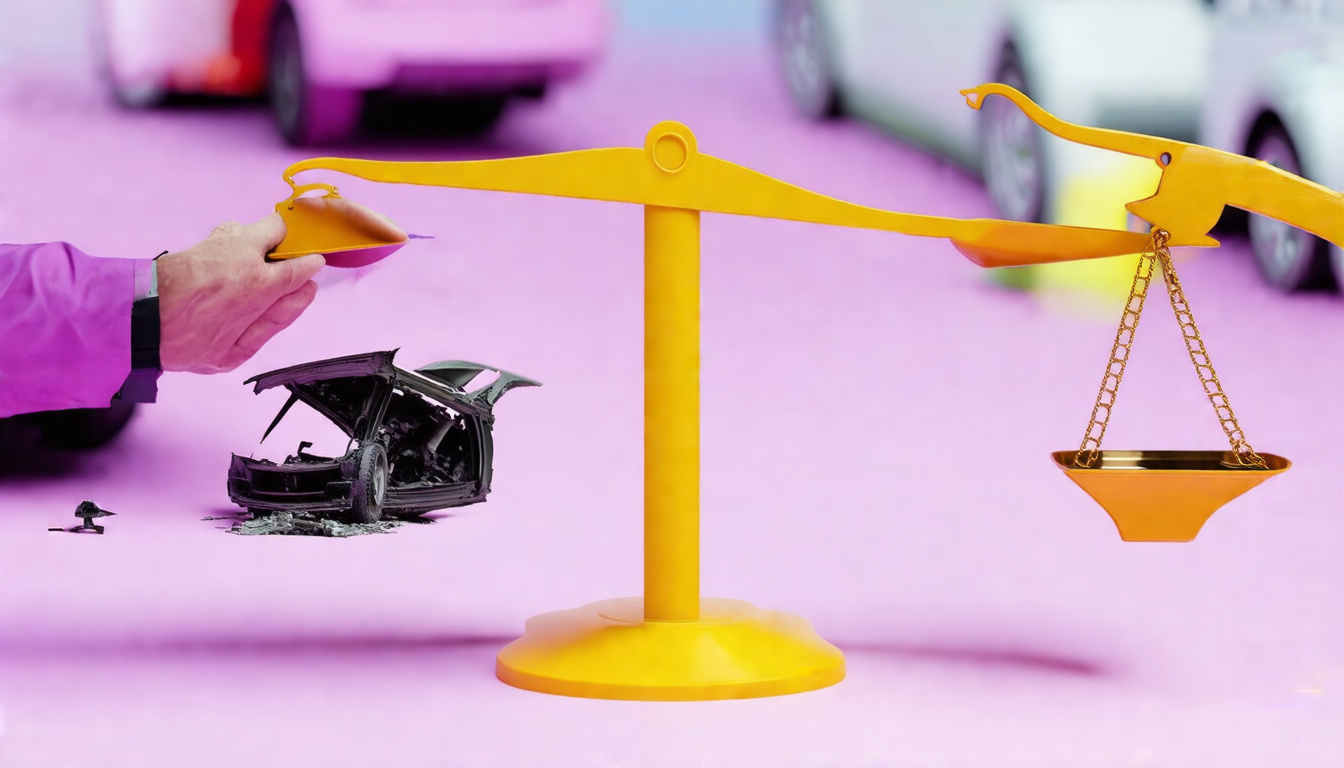When accidents occur, fault determination matters.
Comparative negligence guides fault assignment.
This legal rule links each party’s actions to liability.
It applies in car crashes, slip and fall cases, and other mishaps.
In this article, we explore comparative negligence, compare it with other fault systems, and explain its impact on accident victims.
─────────────────────────────
What Is Comparative Negligence?
Comparative negligence stands as a legal doctrine.
It directs personal injury claims when several parties share blame.
A judge or insurer assigns a percentage of fault to each person.
Damages then match these fault percentages.
For instance, one driver may be 70% to blame while the other bears 30%.
The injured person’s payout then drops by 30% of the damages.
This rule keeps repair fair by sharing responsibility.
─────────────────────────────
How Does Comparative Negligence Differ from Other Fault Systems?
Two systems share fault in tort law.
They are comparative negligence and contributory negligence.
• Contributory Negligence
– A state following this rule bars recovery if a plaintiff holds even a 1% fault.
– Minor fault stops any compensation.
– Many criticize its harshness.
• Comparative Negligence
– It lets injured people receive damages even with some fault.
– However, the award reduces by the person’s own percentage.
– It is more common and flexible in the United States.
Some states tweak this rule further:
• Pure Comparative Negligence
– Plaintiffs recover losses even if they are more at fault than the other party.
• Modified Comparative Negligence
– Plaintiffs recover only if their share stays under a threshold (usually 50% or 51%).
Knowing your state’s system can guide your legal steps.
─────────────────────────────
How Is Fault Determined in Comparative Negligence?
Fault determination follows clear steps.
-
Collect Evidence
– Police reports, witness words, photos, videos, and expert insights help rebuild the accident. -
Assess Behavior
– Each party’s actions—such as obeying traffic rules—are checked. -
Assign Percentages
– A judge or jury looks at the evidence and sets a fault percentage for each. -
Calculate Damages
– Total losses (medical bills, property loss, lost wages, pain) reduce by the injured party’s fault share.
For example, if total damages reach $100,000 and the injured person is 20% at fault, then $20,000 gets deducted.
The payout becomes $80,000. ─────────────────────────────
Examples of Comparative Negligence in Different Types of Accidents
Car Accidents
Imagine one driver runs a red light.
Another driver speeds through yellow.
Each action connects to reckless behavior.
A court may assign 60% to the red-light runner and 40% to the speeder.

Slip and Fall Cases
Picture a store owner missing a spill.
At the same time, a patron looks away.
The patron’s inattention counts as 30% fault.
Damages then fall by that amount.
Workplace Accidents
Think of a site where safety rules break.
An injured worker did not follow protocols.
Both sides share blame through comparative negligence.
─────────────────────────────
Why Is Comparative Negligence Important for Accident Victims?
Comparative negligence makes compensation fair.
It helps assign blame to all who contributed to the accident.
Even if you share some fault, you get some recovery.
Everyone must answer for their own actions.
This rule:
– Balances damage awards,
– Pushes parties to act responsibly, and
– Mirrors the complexity of accidents.
It also cuts down the time courts spend on disputes.
A clear method helps settle fault percentages quickly.
─────────────────────────────
List: Key Differences Between Comparative and Contributory Negligence
| Feature | Comparative Negligence | Contributory Negligence |
|---|---|---|
| Fault Sharing | Fault divides by percentage among parties | Any fault stops recovery completely |
| Damage Recovery | Awards drop by the plaintiff’s fault percentage | No award if the plaintiff shows any fault |
| Fairness | Strives for balanced results | Seen as harsh and unyielding |
| Adoption | Found in most U.S. states | Rarely used nowadays |
| Thresholds | Some have a cap (e.g., 50% or 51% fault) | Uses no fault threshold |
─────────────────────────────
Frequently Asked Questions About Comparative Negligence
Q1: What does "comparative negligence" mean in accidents?
A1: It splits fault among all involved and adjusts compensation to match each share.
Q2: How does comparative negligence change your payout?
A2: If you are partly at fault, your award reduces by your percentage.
For example, 25% fault yields 75% of the total damages.
Q3: Can you win if you are mostly at fault?
A3: It depends on state law.
• In pure comparative negligence, yes.
• In modified types, if you exceed the cap (over 50%), recovery stops.
─────────────────────────────
Conclusion: Why Understanding Comparative Negligence Matters
When accidents occur, fault evaluation is hard.
Comparative negligence offers a straightforward way to assign blame and set damage awards.
Knowing your rights and how fault links to compensation lets you act wisely.
If you suffer an accident and feel unsure about fault, talk to a personal injury attorney.
They will look at your case, gather evidence, and fight for the best compensation under the law.
Don’t let uncertainty stop you from seeking justice.
Learn how comparative negligence works to protect your rights.
For more legal details, visit the American Bar Association (source).
Take action today.
Contact a qualified attorney and let their expertise set your case on the right path.
Author: Doyle Weaver, Attorney at Law
Home | Estate Planning | Personal Injury | Hill Country Lawyer | Terms of Service | Privacy Policy
© 2025 Digital Law Firm, P.C.
Disclaimer: The content provided in this blog is for educational and informational purposes only. It is not intended to constitute legal advice or establish an attorney-client relationship. The information presented does not address individual circumstances and should not be relied upon as a substitute for professional legal counsel. Always consult a qualified attorney for advice regarding your specific legal situation. The author and publisher are not liable for any actions taken based on the content of this blog.

Leave a Reply